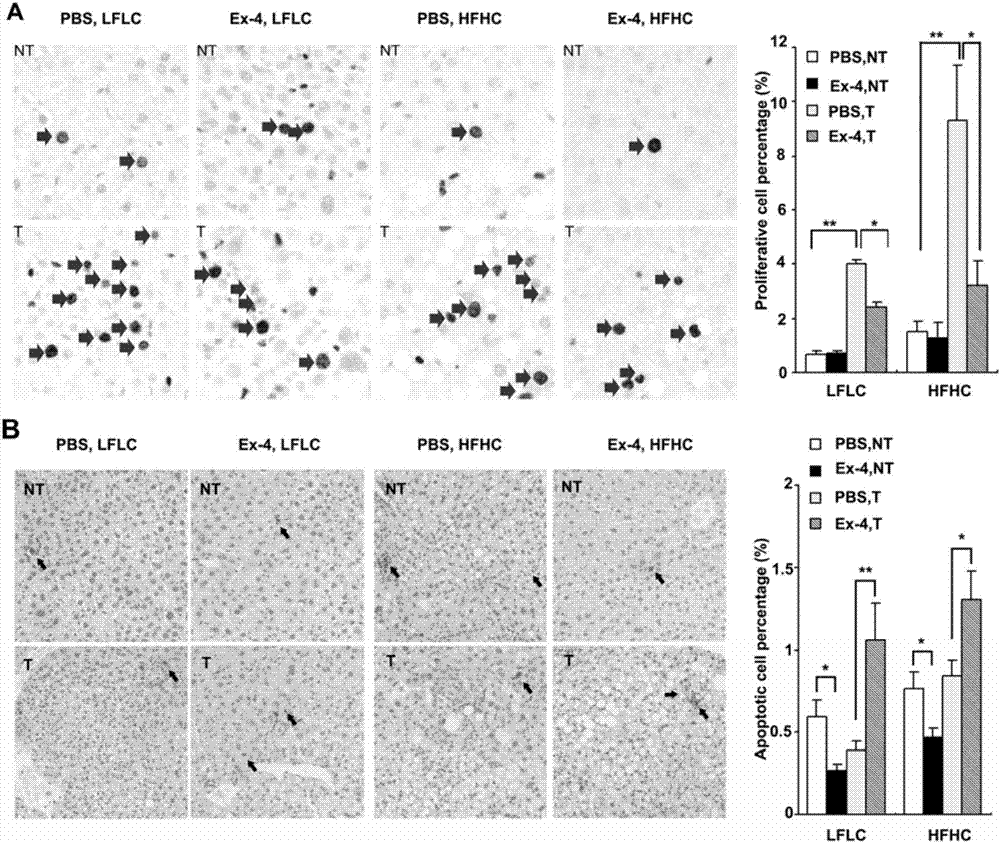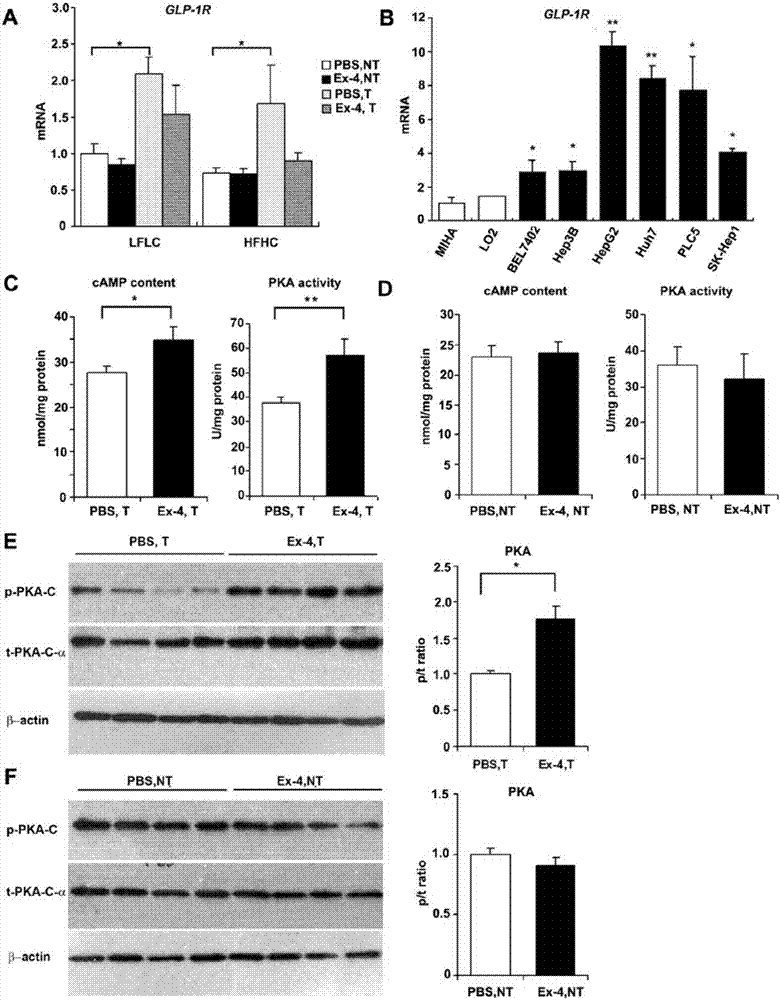Drug for treating hepatocellular carcinoma and application of glucagon-like peptide-1 receptor stimulant and/or dipeptidyl peptidase 4 inhibitor
A technology of glucagon and receptor agonists, applied in the field of application of drugs for the treatment of hepatocellular carcinoma and glucagon-like peptide-1 receptor agonists and/or dipeptidyl peptidase 4 inhibitors, It can solve problems such as undetermined results, and achieve the effect of increasing cancer cell apoptosis, inhibiting cancer cell proliferation, and reducing obesity dependence
- Summary
- Abstract
- Description
- Claims
- Application Information
AI Technical Summary
Problems solved by technology
Method used
Image
Examples
Embodiment
[0033] To examine the effect of GLP-1R activation in HCC, we established an HCC model in mice, in which DEN was administered for HCC induction and fed either low-fat and low-carbohydrate (LFLC) or high-fat and high-carbohydrate (HFHC ) diet for NASH development, designed to mimic pathological progression from NASH to HCC. HFHC and DEN treated mice are clinically relevant as the resulting pathological conditions are highly similar to human diabetes and HCC. Here we found that GLP-1R activation by Ex-4 treatment significantly reduced HCC multiplicity in LFLC- and HFHC-fed mice. Of particular interest is that Ex-4 exerts differential effects in a tissue-specific manner, which are mediated by multiple signaling cascades. This information defines a critical role for GLP-1R activation in protecting the liver from developing HCC and provides new mechanistic insights based on this tumor suppressor effect.
[0034] Male C57BL / 6N mice were housed at 22-24°C under a 12-hour light-dark ...
PUM
 Login to View More
Login to View More Abstract
Description
Claims
Application Information
 Login to View More
Login to View More - R&D
- Intellectual Property
- Life Sciences
- Materials
- Tech Scout
- Unparalleled Data Quality
- Higher Quality Content
- 60% Fewer Hallucinations
Browse by: Latest US Patents, China's latest patents, Technical Efficacy Thesaurus, Application Domain, Technology Topic, Popular Technical Reports.
© 2025 PatSnap. All rights reserved.Legal|Privacy policy|Modern Slavery Act Transparency Statement|Sitemap|About US| Contact US: help@patsnap.com



